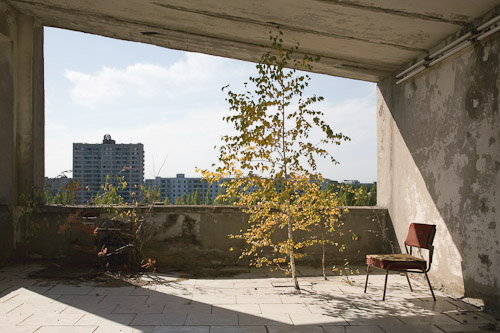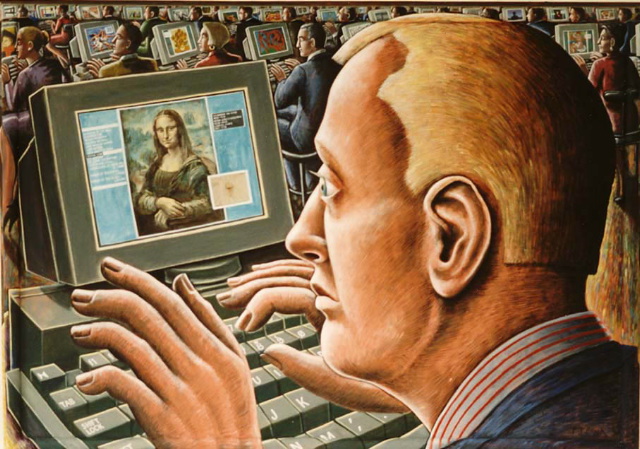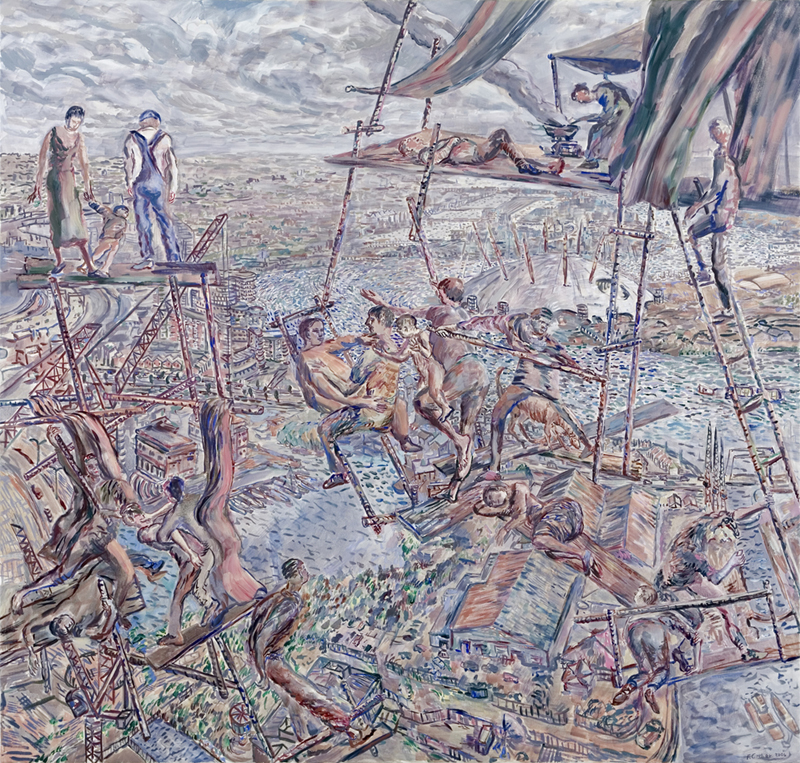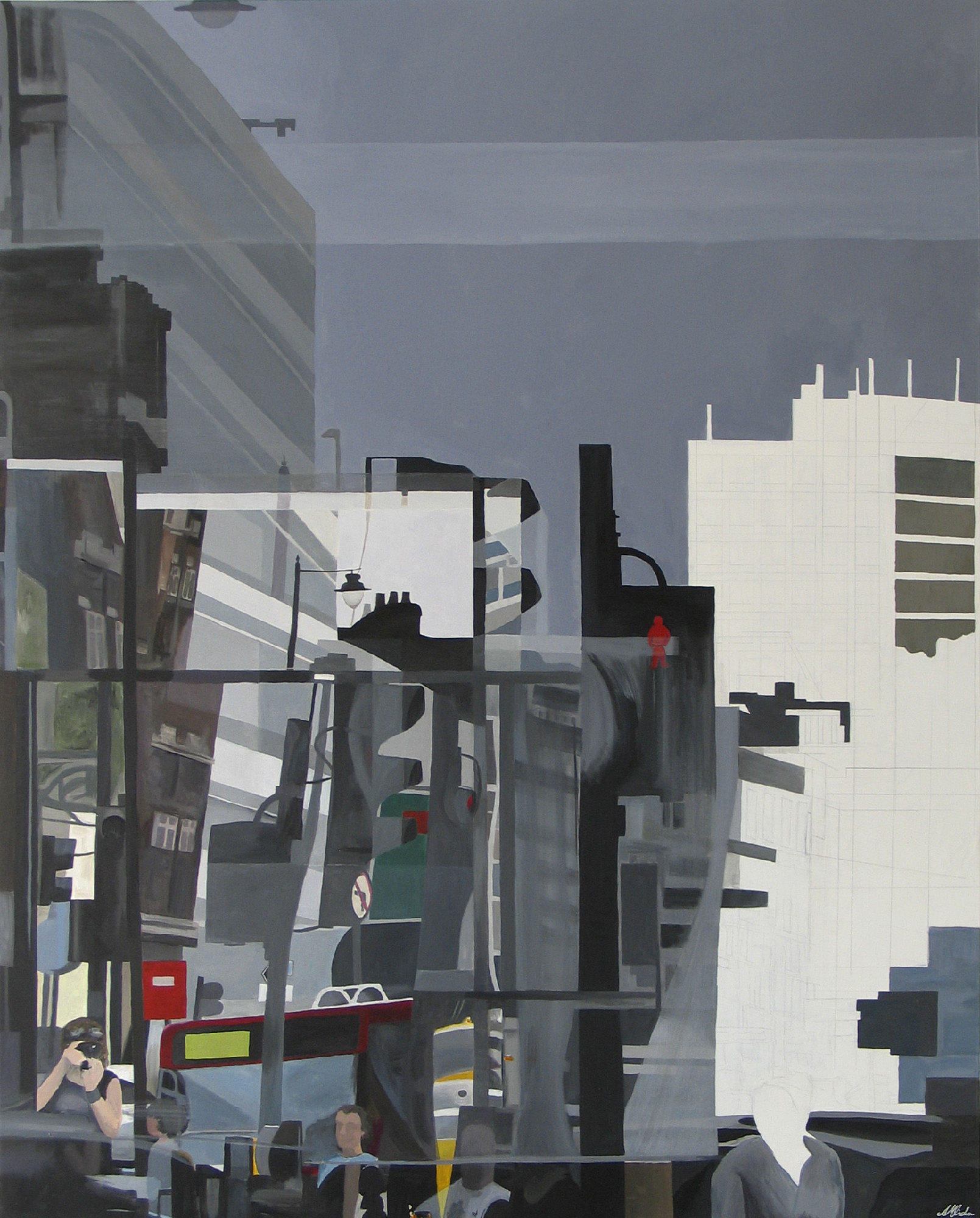The debate on cities at the RSA is first and foremost a verbal discourse. While it often engages the arts and design, Agnieszka Mlicka FRSA argues it excludes artists who express their views on the urban condition through a pictorial language. She suggests an alternative approach.
The current attitude towards the arts is one of channelling creative practice in order to achieve social change, for example the RSA Project in Peterborough. There is, however, a much larger strand of independent visual art practice that could inform the debate, free from prescribed agendas or profit-orientated clients, as is often the case in design. With the upcoming RSA Exhibition entitled Romanticism in the Urban Environment the first step towards an inclusion of visual artists has been made. Taking place in Manchester during July and August, the exhibition aims to provide a platform for RSA Fellows who are artists to highlight urban issues that reach beyond the scope of verbal arguments.
The aim of this article is to propose ways in which such an exhibition can be contextualised within the RSA’s practice, not only as part of its events programme or to illustrate the debate in the form of RSA Animate projects, but on a more theoretical level. It will do so by focusing on the rhetorical value of artworks, in order to recognise fine art as a valid communication tool and, as I will argue here, able to embody a proposition for urban development.
In order for fine art to be accepted as a valid voice in the discourse, it needs to be critical as well as propositional. These two conditions require art to simultaneously look retrospectively to analyse existing problems, and to look prospectively to propose solutions or opinions. There is a long tradition of the visual arts, especially painting, functioning as documentation of how cities were experienced throughout the centuries.

The critic Adrian Searle, in his review of the exhibition Archipeinture: Painters build Architecture at the Camden Arts Centre in 2006, comments that although artists are concerned with space, when painters represent architecture they always paint more than just a setting: “the spaces they paint are full of the atmosphere that human beings lend the verticals and horizontals, the distances and proximities of architecture”.
The works of artists such as Julie Mehretu, Franz Ackermann and Mark Bradford depict a subjective interpretation of urban space, incorporating the larger urban context of the depicted architecture: urban history, conceptual space, globalisation, underground economies, diverse cultural networks, migrant communities, and appropriation of public space. Contemporary art practice is actively engaged with such urban processes, through what is defined by Jane Rendell as a ‘critical spatial practice’.
The unique quality of such art practice is that it expresses a critique of cities by juxtaposing and integrating several disciplines, while revealing their hidden terms and conditions. At the same time, artists are aware of the limitations of their art, which is inherently embedded within the same urban processes that it aims to critique. The work is presented outside of the gallery, not just moving from aesthetic to cultural production, but also into the domain of the academic field. It does this by adopting a didactic approach and applying rhetorical techniques, for example ‘artworks’ in the form of lectures, symposia or guided walks, using techniques such as PowerPoint presentations and ‘academic’ writing. This leads to a change in the role of the artist emerging out of a new relationship with the audience, where the artist is not just a cultural producer but also a ‘researcher’.

Of course, such process-based art does not necessarily result in the making of an art object, but this is not to say that traditional mediums such as painting cannot develop out of a systematic and logical investigation. The key is to reveal these backstage processes and to present them as part of the artwork. Where the output might still be an ‘aesthetic’ object - for example a painting - more important is the reason for authoring the work, the way it has been written, the format in which it is published and the way it is read by the audience. The visual artwork becomes a text that aims to communicate with the audience, and has a rhetorical value. The work is not presented as an autonomous object, but as part of the processes that underlie its making.
The biggest shift, however, is needed in the perceptive audience, which needs to recognise the painting as a treatise, rather than as an aesthetic object that is free to individual interpretation. Once fine art is accepted as a visual argument, the question remains how it can also function as a proposition.

One of the striking questions set by the exhibition curators, Charlotte Wand and Lotte Karlsen, is: “Can the romanticists look into the future as our changing social networks affect the vista of the urban landscape?” Today’s artists do more than just resist, as implied by the reference to Romanticism. They also expose the urban complexities in the 21st century enlightenment, and as conscious and engaged citizens they contribute to the improvement of social networks.
This is at the very foundation of what constitutes healthy cities, not dissimilar to what Jane Jacobs suggested in the 1960s. Her ideas on urban planning, criticising the ‘rational’ modernist approach to urban renewal, are still alive today as recently argued at the RSA debate on Jane Jacob’s legacy.

Fine art has the potential to propose urban improvement because it uniquely combines image with process, or - in urban terms - the form with the function. Above all, it is the process of engagement which proposes alternative ways to think about, to analyse and to respond to cities in the 21st century. Whether the upcoming exhibition will be able to validate these ideas remains to be seen at the grand opening to which you are cordially invited. In the meanwhile, I propose that we test this by bringing the artworks into the RSA auditorium to get involved in a quiet conversation chaired by artists.
Come to the RSA Fellows Exhibition 'Romanticism in the Urban Environment' - Private viewing on 6 July, 6-8pm, exhibition open 7 July - 26 August 2011 at the The Portico Library & Gallery, 57 Mosley Street, Manchester M2 3HY
Agnieszka Mlicka FRSA is an independent artist and PhD researcher in art and architecture at the University of Westminster.
Join the discussion
Comments
Please login to post a comment or reply
Don't have an account? Click here to register.
Check out http://szinesvaros.hu , its a live project in Hungary within a very similar context, forming a cooperation between artists, local authorities and stakeholders in order to bring colors and change into dull and grey urban environments.
Gosh, are we still going round this loop?! This has been part of arts policy in the UK since the mid 1980s at least.
Hi Alan, thanks for your message. I have presented at TINAG's Festival on Cities last year, and I am also engaged with the debate on cities at Public Works. Both art/architecture organisations are indeed doing a great job, however, fine art is not part of this discussion...
You should check out www.thisisnotagateway.net, does exactly what you want.